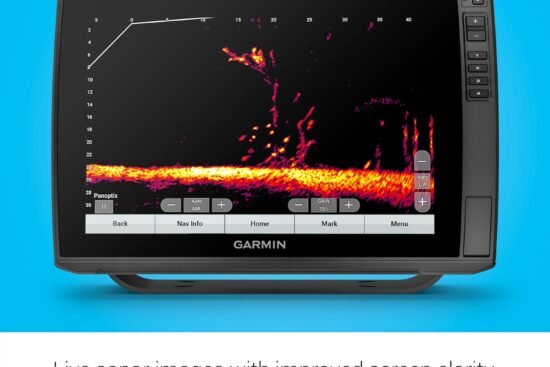
When it comes to choosing a laptop, the processor plays a vital role in its overall performance. With numerous options available in the market, one question arises: Which processor is better for laptops, Intel or AMD? Both industry giants have their own strengths and weaknesses, making it a tough decision for consumers. In this article, we will explore the key factors to consider when making a choice between Intel and AMD processors for laptops, helping you make an informed decision that suits your specific needs.
Performance
When it comes to performance, both Intel and AMD have made significant strides in recent years. However, when comparing single core performance, Intel processors have traditionally taken the lead. This is due to Intel’s focus on higher clock speeds and strong single-threaded performance. For tasks that heavily rely on single core performance, such as web browsing and office productivity applications, Intel processors tend to offer a snappier and more responsive experience.
On the other hand, AMD processors excel in multicore performance. With their Ryzen processors, AMD has introduced a higher core count and multithreading capabilities that surpass Intel’s offerings in the same price range. This makes AMD processors a great choice for tasks that benefit from parallel processing, such as video editing, 3D rendering, and multitasking. With more cores and threads, AMD processors can handle heavier workloads effectively.
When it comes to graphics performance, Intel processors generally offer integrated graphics that are sufficient for casual use and basic gaming. However, for more demanding games or graphics-intensive applications, dedicated graphics cards from NVIDIA or AMD are recommended. In this regard, AMD’s APUs (Accelerated Processing Units) with Radeon Vega graphics have an edge over Intel’s integrated graphics in terms of performance, offering a better gaming experience on a budget.
Power Efficiency
Power consumption is an important consideration for laptop users, as it directly affects battery life and heat generation. Historically, Intel processors have been known for their superior power efficiency. Intel’s focus on optimizing power consumption has allowed them to deliver processors that not only perform well but also offer good battery life. This is especially noticeable in Intel’s ultrabook-class processors, where power efficiency is a key factor in providing a long-lasting battery.
However, AMD has made significant strides in power efficiency with its Ryzen processors. Through architectural improvements and a move to a more power-efficient 7nm manufacturing process, AMD has narrowed the gap with Intel in terms of power consumption. While Intel still holds an advantage in this area, choosing an AMD processor for your laptop no longer means sacrificing power efficiency, especially in the mid-range and high-end segments where Ryzen processors shine.
When it comes to battery life, numerous factors come into play, including the laptop’s display, battery capacity, and efficiency of other components. While the processor plays a role in power consumption, it is not the sole determining factor. Therefore, it is essential to consider the overall system design and battery capacity when evaluating the battery life of a laptop.

Pricing
When it comes to pricing, AMD processors often provide better value for money compared to Intel processors. AMD’s aggressive pricing strategy has allowed them to offer processors with comparable performance to Intel’s offerings at a lower price point. This makes AMD processors a compelling choice for budget-conscious consumers who prioritize getting the most performance for their money.
In the entry-level segment, AMD processors typically provide more affordable options with solid performance. These entry-level processors cater to everyday tasks such as web browsing, document editing, and casual multimedia consumption. For users with basic computing needs, AMD’s entry-level processors deliver sufficient performance without breaking the bank.
In the mid-range and high-end segments, both Intel and AMD offer competitive options. Intel’s processors may come at a premium, but they often provide marginal performance gains in certain applications. AMD’s Ryzen processors, on the other hand, offer higher core counts and multithreading capabilities at a lower price point, making them ideal for power users and professionals who require strong multicore performance without sacrificing their budget.
Compatibility and Support
When considering compatibility, both Intel and AMD processors are well-supported by various operating systems. They are both compatible with popular operating systems such as Windows and Linux. However, it is essential to check for compatibility with specific software requirements, especially if you rely on specialized applications for your work.
In terms of software support, Intel processors have historically enjoyed better optimization and compatibility with a wide range of applications. Many software developers have prioritized optimizing their software for Intel’s processors, which may result in better performance and stability when running those applications. This is especially true for applications that heavily rely on single core performance.
While AMD processors have made significant improvements in software support in recent years, some applications may not be as optimized for AMD processors. However, the gap in software support is narrowing, and with the increasing popularity of AMD processors, developers are putting more effort into optimizing their software to take advantage of AMD’s architecture.

Overclocking
For those seeking additional performance from their processors, overclocking can be a tempting option. Overclocking refers to manually increasing the clock speed of a processor beyond its stock settings to achieve higher performance. In this aspect, both Intel and AMD processors offer varying degrees of overclocking capabilities.
Intel processors have traditionally been known for their strong overclocking potential. With their “K” series processors and unlocked multipliers, Intel provides enthusiasts with the ability to push their processors beyond their stock speeds. This allows for higher performance in tasks that benefit from higher clock speeds, such as gaming and content creation. However, it is essential to note that overclocking may void the warranty of the processor and can potentially lead to reduced stability if not done correctly.
AMD processors also offer overclocking capabilities, although they have historically been less forgiving and yielded lower frequency boosts compared to their Intel counterparts. However, with the introduction of their Ryzen processors, AMD has made significant strides in overclocking potential. While Intel still holds an advantage in this area, AMD’s Ryzen processors now offer more headroom for overclocking, providing enthusiasts with the ability to squeeze out extra performance.
It is vital to note, though, that the extent of overclocking potential varies from processor to processor, and not all processors within the same brand and lineup will have equal overclocking capabilities.
Thermal Management
Efficient thermal management is crucial to ensure the longevity and performance of a laptop processor. Both Intel and AMD offer their own solutions to keep their processors cool under heavy workloads.
Intel processors typically come with their own cooling solutions, such as Intel stock coolers or higher-end cooling solutions for the more powerful processors. These coolers are designed to maintain optimal temperatures and provide adequate heat dissipation for their respective processors. However, like with any stock cooling solution, there is some room for improvement, especially for users who push their processors to their limits through overclocking or sustained heavy workloads.
AMD processors, on the other hand, do not come with stock coolers for their higher-end processors, with the exception of some APUs. Instead, users are encouraged to choose their own cooling solutions tailored to their specific needs. While this gives users more choices and flexibility in selecting aftermarket cooling solutions, it also means that additional care needs to be taken to ensure adequate cooling for the processor, particularly when overclocking or running demanding applications. Proper cooling is essential to prevent thermal throttling, which can adversely impact performance.
Integrated Graphics
Integrated graphics play a crucial role in providing visual output and enable users to enjoy casual multimedia consumption and basic gaming without the need for a dedicated graphics card. Both Intel and AMD offer integrated graphics solutions in their processors, but the performance and capabilities differ.
Intel processors generally come equipped with integrated graphics that offer decent performance for everyday tasks such as web browsing, document editing, and media playback. Intel’s integrated graphics can handle basic gaming at lower settings and resolutions, making it suitable for casual gamers. For more demanding games or graphics-intensive applications, users would need to rely on dedicated graphics cards.
AMD’s integrated graphics, specifically the APUs with Radeon Vega graphics, provide a better gaming experience compared to Intel’s integrated graphics. With increased processing power and better graphical capabilities, AMD’s APUs allow for smoother gameplay and improved visual quality in a wider range of games. While they still may not match the performance of dedicated graphics cards, AMD’s integrated graphics provide a viable option for budget-conscious gamers.
Upgradability
Upgradability is an essential consideration for many users, as it allows them to extend the lifespan of their laptops and adapt to changing computing needs. In terms of upgradability, both Intel and AMD processors require compatibility with the motherboard and socket used.
Intel processors are typically known for better compatibility with a wider range of motherboards, as manufacturers prioritize support for Intel’s platforms due to their popularity. This provides users with more choices when it comes to selecting a motherboard and allows for easier future upgrades, such as upgrading to a newer Intel processor without changing the entire motherboard.
AMD processors, specifically the Ryzen series, introduced a new socket called AM4, which has seen good long-term support from AMD. While the AM4 socket has seen multiple generations of processors, it is worth noting that compatibility may vary depending on the specific chipset and motherboard manufacturer. However, with the right motherboard, users can enjoy improved upgradability and flexibility for future upgrades, such as transitioning to a more powerful Ryzen processor without the need to change the motherboard.
Brand Reputation
Brand reputation is an important factor when considering purchasing a laptop with either an Intel or AMD processor. Both Intel and AMD have established themselves as reputable brands in the processor market, but there are differences in customer perception.
Intel has long been considered a leader in the processor market, known for its strong performance and reliability. Intel processors are widely used in a variety of devices, ranging from laptops to desktops, which contributes to their positive brand reputation. Their long-standing presence and market dominance have established a sense of trust among consumers.
AMD, on the other hand, has experienced fluctuating brand reputation throughout its history. In recent years, however, AMD has gained significant momentum with its Ryzen processors and has been lauded for providing strong competition to Intel. AMD’s focus on value and performance has resonated with consumers, leading to an increase in customer satisfaction and a positive perception of the brand.
Ultimately, brand reputation is subjective and can vary depending on individual experiences and preferences. It is important for consumers to consider their specific needs, research and compare various offerings from both Intel and AMD, and make an informed decision based on their personal requirements.
Market Share
In terms of market share, Intel has historically dominated the processor market and remains the frontrunner with a significant market share. Intel’s long-standing presence, strong brand recognition, and commitment to technological advancements have made them the processor of choice for many consumers and computer manufacturers.
However, in recent years, AMD has made significant gains in market share, particularly in the desktop and server segments. AMD’s Ryzen processors have been well-received by consumers, offering strong performance and value for money. AMD’s increased market share is indicative of the growing popularity and adoption of their processors as a viable alternative to Intel.
While Intel’s dominance is still prevalent, the industry is witnessing a gradual shift as AMD gains ground. The increased competition between Intel and AMD is beneficial to consumers, as it drives innovation and competitiveness in the market, resulting in better products and pricing options.
It is worth noting that market share can fluctuate over time due to various factors, including technological advancements, consumer preferences, and market dynamics. Monitoring market trends and considering the current market share can provide valuable insights when making a purchasing decision.




